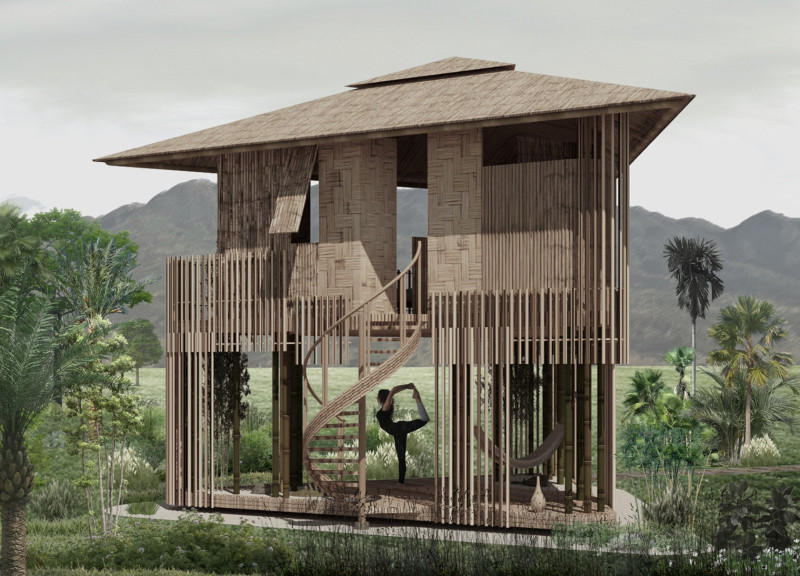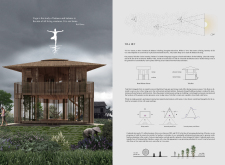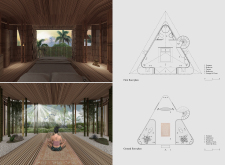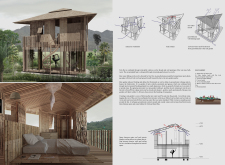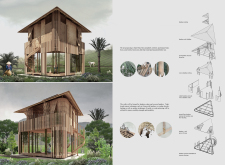5 key facts about this project
The Tula Hut is designed as a retreat space that focuses on balance and tranquility. Located in Cambodia, it provides a serene environment that encourages relaxation and self-reflection. The design concept centers around the integration of natural elements and a thoughtful arrangement of spaces, creating an experience that aligns with the principles of yoga.
Architectural Concept
The Tula Hut consists of areas designed for both physical and mental rest. The first level features a space enclosed by bamboo walls, echoing the style of traditional rural homes. This design choice connects to local building practices while offering comfort. The ground level has a space surrounded by local plants, enhancing the connection between people and nature.
Spatial Design and Orientation
The shape of Tula Hut is triangular, carefully designed to address local climate conditions, especially heat and strong winds during the rainy season. It is oriented to face east, following cultural traditions that greet the morning sun. This positioning minimizes heat accumulation by maximizing wall exposure to the north. This attention to detail supports energy efficiency and enriches the experience of being in the space.
Materiality and Sustainability
Bamboo is the main material used, reflecting a sustainable approach in a region facing significant deforestation. It is a quickly renewable resource, harvestable every few years, making it an environmentally friendly option that helps support local ecosystems. The design includes features for managing rainwater, directing it effectively to reduce runoff and replenish groundwater, further supporting local ecology.
Natural Integration and Response
Tula Hut uses natural ventilation to enhance comfort for its occupants while lowering environmental impact. Openings in the structure allow for airflow, keeping the space cool and fresh. Rainwater is channeled to gravel areas around the hut, promoting groundwater recharge and minimizing surface runoff. Rounded corners on the building not only help reduce wind pressure but also contribute to a softer visual appearance. The overall design reflects a commitment to blending architecture with nature, creating a tranquil and welcoming retreat.


